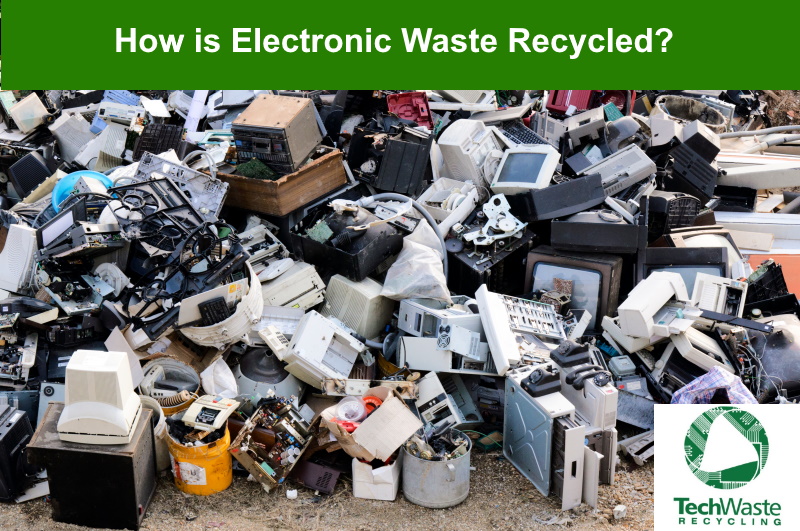Electronic waste comprises more than 5% of municipal solid garbage. These abandoned electronic gadgets are frequently disposed of in landfills. Electronics often contain harmful and poisonous elements. Inappropriate disposal of electronics releases hazardous compounds in the environment.
E-waste recycling is the reprocessing and reusing of electronic waste. E-waste recycling is a method of recovering material from electronic trash.
Recycling e-waste recovers precious elements, such as gold or copper, that manufacturers may utilize to create new goods. This minimizes the energy needed to mine, process, and produce new materials while lowering pollutants and greenhouse gas emissions. According to the Environmental Protection Agency (EPA), recycling 1 million cell phones may recover 35,000 pounds of copper, 33 pounds of palladium, 772 pounds of silver, and 75 pounds of gold.

Materials in an E-Waste That Can Be Recycled
Almost all materials in electronic products, such as televisions, cellphones, and laptops, may be recycled. Some of the recyclable materials are listed below.
- Metal
- Plastics
- Glass
- Gold
- Silver
- Platinum
- Copper
- Tin
- Toners and Cartridges
- Circuit Boards
- Batteries
An infinite number of materials may be recycled, which is why no e-waste recycling program provides a one-size-fits-all solution. However, there is a general approach to go about e-waste recycling.
How E-waste Is Processed?
During the recycling process, e-waste is processed using both physical labor and automation. Automated equipment aids in the effective recovery of reusable resources, the elimination of hazardous waste, and the protection of personnel and the environment.
The 5 steps of the E-waste process are listed below.
- Separation and sorting by hand. Electronic goods are physically sorted, and components that need not be shredded or destroyed, such as batteries, UPS battery systems, toner cartridges, and fluorescent lights, are removed through manual labor.
- Shredding. The electronic products are shredded into small 100mm pieces in the initial size reduction stage. The materials are further broken down into smaller fragments that are ideally suited for the separation process in the secondary size reduction step. Any dust removed during this procedure is disposed of in an ecologically responsible manner.
- Magnetic removal. Magnets are used to extract steel and iron fragments.
- Metallic and nonmetallic separation. Non-metallic materials such as glass and plastic are segregated from other metals such as aluminum, copper, and brass. Eddy currents, visual identification, and magnets are used to separate objects.
- Separation by water. Water is used to separate plastic and glass. Lead-containing glass may be delivered to lead smelters to produce new products such as batteries, CRTs, and x-ray shields. Colored plastics are segregated and sold to plastic recyclers.
E-waste recycling is a major global problem for a variety of reasons. It significantly impacts our immediate surroundings as humans and life on Earth. It even offers large economic advantages for individuals, communities, and nations. Municipalities’ e-waste policies have a large contribution to how your community handles electronic waste.
Although the stages are labor-intensive, they are simple to follow. There are various phases involved, from gathering and sorting to preparing for sale, that you may readily follow. Of course, you may immediately benefit from e-waste recycling while simultaneously helping to conserve the environment.
Electronic recycling R2-certified companies, such as TechWaste Recycling, may also handle your e-waste disposal. Call them to schedule a pickup, and see the location areas we serve.
.

































